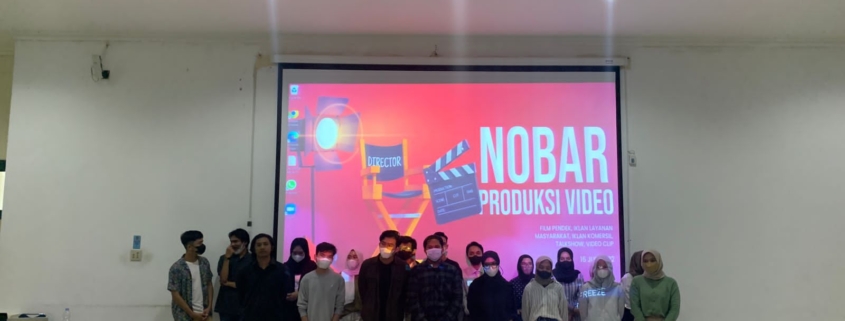Screening the Student’s Work: Learning How The Video Production Created
The development of digital technology now makes it easier to learn video-based content production. If you had to spend a lot of money in the past to get a good quality camera, now with smartphones, some of the obstacles in video production can be overcome. It’s cheap, fast, and quality can be considered sufficient.
However, learning to produce videos cannot be arbitrary. It’s not just about the ease and sophistication of the tool. Some aspects of the message, content, or ideas determine whether a video work can become an idol for the audience. That is what M. Iskandar T. Gunawan, a seasoned Growth and Development Film filmmaker, wanted to convey at the Video Production Nobar event on July 16, 2022.
Gunawan, as Iskandar is known, was one of the judges in appreciating the video work of UII Communications Department students, along with two other judges, namely Iven Sumardiantoro (Editor and Videographer for Iconisia TV) and Jogi Syamanta, Videographer for UII TV. The three became responders and assessors of student work in video production courses.
According to Gunawan, in the 45 works from each group, efforts have been seen to process ideas in the form of creative digital fans. “This effort can also be seen in the execution of the images and the packaging of the message. There is a video where I saw a very serious and universal message, and it was conveyed in good ways,” said Gunawan, a laboratory assistant at the UII Communications Department.
Gunawan also appreciated several students’ works that had the courage to develop wild and critical ideas. “I noted that there are several, for example, animation that is also interesting, one of those who have dared to choose the type of animation,” he said. “Including earlier there was the issue of loans (online loans) too, even though there were lacking details. For example, the talent is still looking at the camera, there are also other videos where the talent looks less brief.”
Not only short film videos. Many students also choose to produce videos of public service advertisements, commercial advertisements, talk shows, and video clips. One of them that received positive appreciation was the advertising video.
“This advertising video for people with disabilities is interesting, not only for activities but also supported by showing marginalized issues. It can synergize the story with the message you want to convey,” said Gunawan. Gunawan can say this because eating enough acid and salt touches on the issue of disabilities and minority groups in his documentaries.
Gunawan’s advice for videos with lots of dialogue elements is to prioritize vigilance. “In short films, be careful with playing dialogue, I can’t really catch the information from the dialogue. There are also those who use the local language dialect,” suggested Gunawan. According to him, dialogue is important, but don’t let it obscure the message you want to convey to the audience.
The course taught by lecturers Ratna Permata Sari, Ida Nuraini DKN, and Anggi Arif Fudin is always celebrated with an appreciation for work and awards every year. Anggi, one of the lecturers in charge of this course, said this learning pattern aims to enable students to make presentations and create creative, innovative, and inspiring works. “Later on these works can be their initial foothold to be able to make their final work,” said Anggi.



